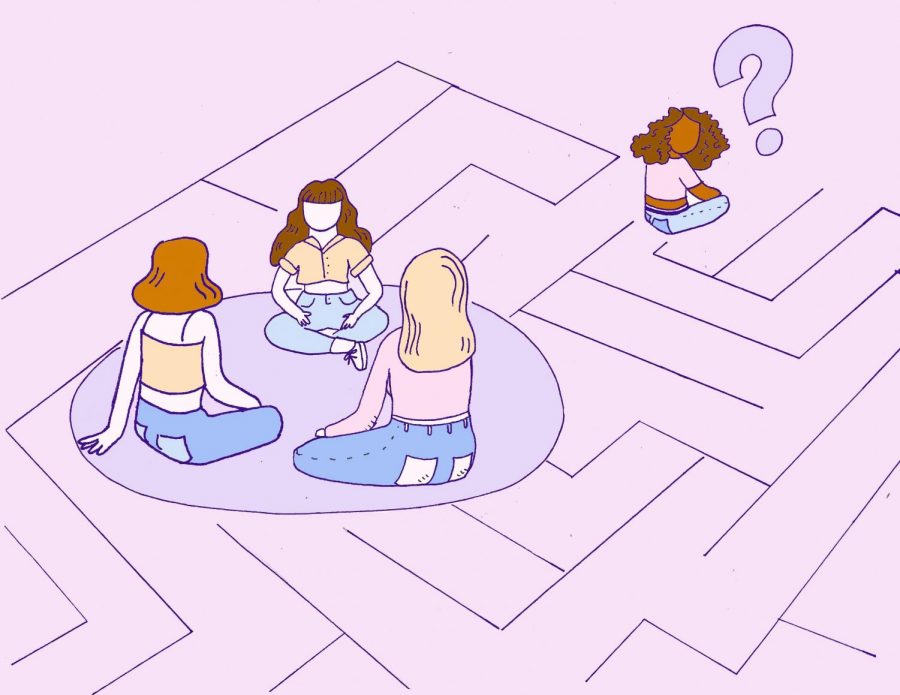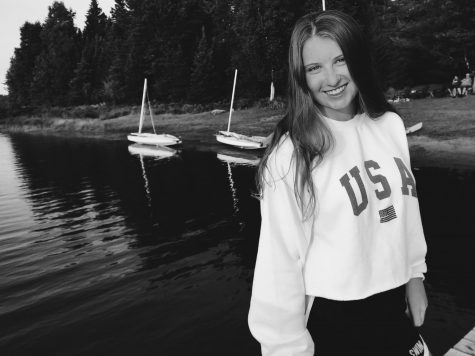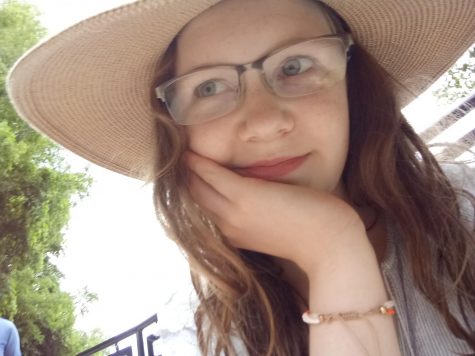Exploring the complexities of friend groups at ETHS
February 28, 2020
Walking through the halls, you see many different groups of friends, some speaking another language and others talking about practice or upcoming club meetings. The social culture of ETHS is nuanced and ultimately affects our high school experiences.
A clique is defined as a narrow exclusive group of people, according to the Merriam Webster dictionary. Although cliques may not exist in their most stereotypical form at ETHS, friend groups do exist. More specifically, some students feel as though they don’t exactly fit into one group of people all the time, creating fluidity in their social circles.
“I am in the band program, but I also do baseball, [and] I swim. There are many different groups I’m in like the academic community, the athletic community, [and] the arts community. I feel like I meet a lot of people, but I can’t specialize in one group,” junior Andrew Vye says.
Although this may be true for some, there are also other students who feel like they do have a consistent friend group that they hang out with exclusively.
“I would say I have a more solid friend group because I hang out with the same people whenever I get the chance to. Really, it doesn’t switch up that often,” sophomore Teague Sieja says.
Additionally, many people have a social fabric that’s centered around their clubs. For many, clubs and extracurriculars are a place to spend time with friends with similar interests. About 57 percent of children ages six to 17 participate in at least one club or sport, according to a 2014 US Census report.
“Last year, I joined the tennis team and I made a bunch of good friends doing that, and then lacrosse, so that definitely has something to do with the people I hang out with,” Sieja says.
However, there is more nuance to friend groups and social circles than just clubs and sports, as some spaces within ETHS can feel exclusive.
“When I was a freshman, I found it weird that there wasn’t a Black Student Union even though we are the second largest population at ETHS. It was hard for me to balance being with my black friends during the day and then going to a group like Emerge where nobody who looked [like me] was around. I was still forced to speak up and interact with people who didn’t look like me,” senior Mauranne Verner says.
In an interview with Stanford News, Daniel A. McFarland, a researcher from the Stanford Graduate School of Education, says “schools are indirectly shaping [social] conditions.“ ETHS is influencing the social culture because of the wide variety of options for extracurriculars and classes, providing students with the opportunity to find spaces where they feel like they belong.
“My experience in observation is that people gravitate to people who look like them and spaces where they feel comfortable. There has to be some common thing that brings them together. I say our diversity is a blessing, but it can also be a challenge… Students really need to extend themselves,” Director of Activities and Student Success Center Nichole Boyd says.
Students often find themselves forming friendships through affinity groups, groups based on a common identifier or interest like race, gender or class. Affinity groups at ETHS can meet in spaces like the classrooms, clubs and summits, which can foster an environment where students can relate to potentially similar lived experiences.
According to an interview on WTTW with UIC sociology professor Rachel Gordon, it is common for adolescents to form solid social groups and cliques so that they have a safe space to discover their identities.
“My friends I’ve made at the [Middle Eastern, North African, and Asian] summit relate more deeply to my experiences,” senior Anika Kaushikkar says. “Many of them are first or second generation immigrants and they relate intimately to my experiences as a brown person.”
At ETHS, the summits provide a space where students of different identities can reflect on their lived experiences through a series of workshops and guest speakers. The summits are a part of ETHS’ Social Consciousness Series, which aims to create a sense of belonging for all ETHS students.
“Right now, I’m on the leadership board for the Black Student Summit. I was drawn to this because of my desire to form a black student union, and having participated in the summit for years, I wanted to help improve it. As I said before, most of the clubs I am in are very white spaces, and it is nice to have that space and to reconnect to black culture at ETHS, ” Verner says.
Language also contributes to how students make friends. In 2018, The Center for Immigration Studies, found that around 63.7 million U.S. residents spoke another language at home, making language a prominent way that people connect.
“It’s just nice knowing that you and this other person can speak a language and have that in common,” sophomore Hilda Arellano, who speaks Spanish in addition to English, says.
Arellano and sophomore Daniella Escobar recognize their language as a way to connect with people because there’s more to language than just words. It’s a way to intimately communicate with people; every language has its own intricate histories of how the language is spoken.
“When I found people who spoke the same language as me, we were very similar, and I think that definitely helped me,” Escobar, who also speaks Spanish in addition to English, says.
In addition to language, recognizing the diversity of identities at ETHS is something Boyd thinks the school does a good job of catering to.
“One of our biggest things is that we’re culturally, racially, and economically diverse. That’s one thing that sets us apart from other schools,” Boyd says, “We do have a lot of clubs that celebrate different identities…We have so many different things that support all the different ways students show up.”




















